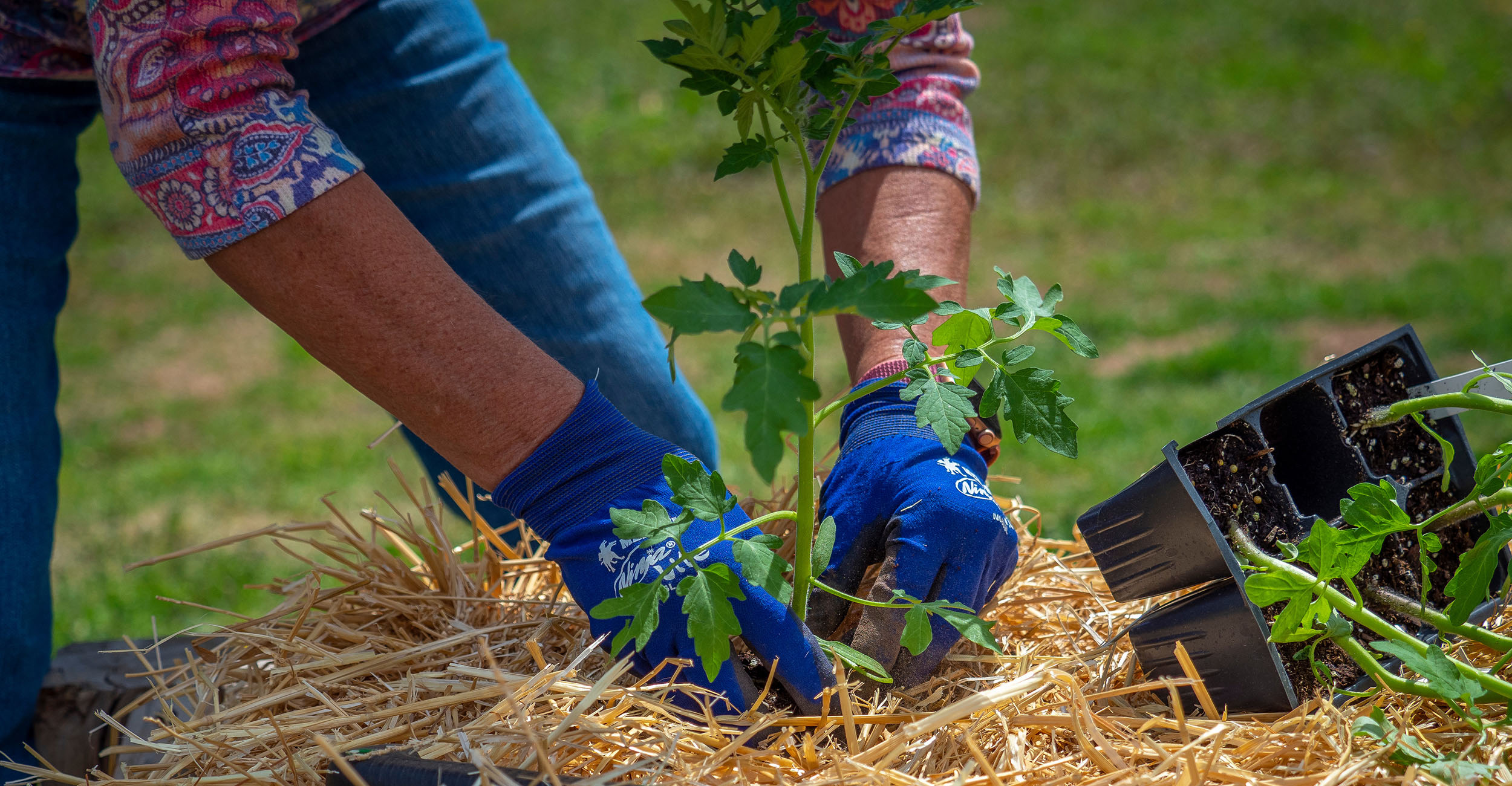
Straw bale gardening is great alternative to traditional gardening
Friday, April 9, 2021
Media Contact: Trisha Gedon | Communications Specialist | 405-747-7772 | trisha.gedon@okstate.edu
Gardening is a popular hobby for many people, but obstacles such as poor soil quality, limited space and temporary housing can frustrate even the most dedicated green thumbs.
Fortunately, there is an alternative for growing flowers, herbs and vegetables, said Casey Hentges, host of the Oklahoma State University Extension television program Oklahoma Gardening.
“Straw bale gardening is great for those who, for whatever reason, are unable to garden in the traditional way. This type of gardening also is great for people with limited mobility,” Hentges said.
Hentges recommended straw bales over hay due to the number of weed seeds typically found in hay bales. Select bales that are tight and held together with two or three strands of twine, and be sure to leave the twine in place.
Once the bales are selected, they will need to be conditioned or aged. This simply means initiating decomposition within the bale. It’s an important step before planting; otherwise, microbes will take available nutrients away from the plants.
“Water the bales every day for two weeks and sprinkle a nitrogen-rich fertilizer on top every other day. Over the two weeks, the bale will heat up as the fresh straw begins to break down,” said Laura Payne, OSU Extension associate and assistant producer for Oklahoma Gardening. “The bales will cool down after a noticeable temperature spike, typically within 14 days. Now the bale is ready to plant.”
The type of plants under consideration will help determine where to place bales to take advantage of available sun and shade. Each bale should be turned so the twine is not on top.
Hentges said there are a couple of options for planting in the bale.
“You can make pockets or holes about 3 inches to 4 inches deep by gently loosening and removing a small amount of the straw and adding a small amount of potting media to help retain moisture to get your plant established,” she said. “The number of pockets per bale depends on what the grower is planting.”
A second option, called the flat method, adds or spreads potting media on top of each bale. For both methods, the growing medium can be compost or manure mixed with blood meal and other nutrient-rich materials.
Straw bale gardening is good for both direct seeding and transplants. An added bonus is that weed and insect control is much easier.
“It’s recommended to replace straw bales at the end of the growing season. They don’t last long due to the necessary, frequent watering and high microbial/root activities that occur in the bales,” Hentges said. “However, the used bales make a great addition to the compost pile.”
Oklahoma Gardening has several segments on the various steps involved in straw bale gardening. Check out these segments for preparing the bales, planting the bales, making use of the bales after the planting season and how to use the old bales the following season. In addition, more straw bale gardening information is available on OSU Extension’s website.
